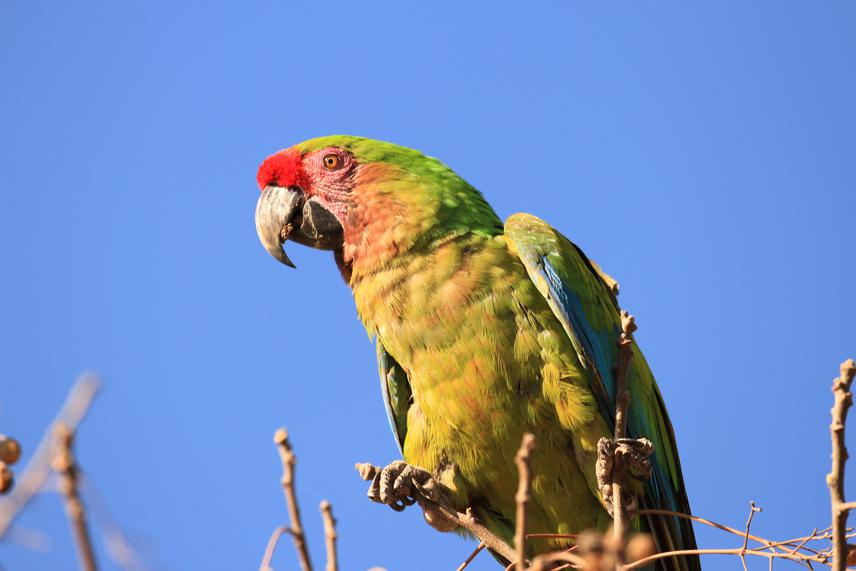Alberto González Martín
This project aims to create a comprehensive understanding of the Bolivian subspecies of the Military Macaw (Ara militaris bolivianus) by generating valuable information and raising awareness to enhance conservation efforts. The Military Macaw, known for its fascinating plumage, faces threats such as habitat loss and fragmentation, nest poaching and selective logging. To address these challenges, the project focuses on modelling the potential distribution of the species, studying its ecological requirements, and promoting stakeholder engagement.
Habitat fragmentation and loss have serious consequences for bird species, including the Military Macaw, which depends on specific ecosystems for survival. This project seeks to generate crucial information about the areas where the species is likely to be found through potential distribution modelling. This data will support targeted conservation efforts and habitat restoration initiatives. By understanding the ecological factors influencing the presence of the Military Macaw, such as forest composition and food availability, the project will inform habitat management strategies for the species' long-term survival.

Close-up photograph of a Military Macaw (Ara militaris), by Luis Rivera.
Dissemination of project findings and collaboration with stakeholders are key components. Workshops, lectures, and capacity building initiatives will raise awareness about the Military Macaw's conservation status and the importance of protecting the species and its habitat. By involving local communities and stakeholders, the project aims to develop effective conservation strategies that incorporate local perspectives and resources.
The project also aims to contribute to decision-making processes by providing valuable information to policymakers, conservation organizations, and local communities. The potential distribution map and ecological insights will guide informed decisions on habitat preservation, land use planning, and biodiversity conservation. By making the project results available to authorities in charge of developing conservation policies and management plans, the project will promote the long-term survival of the Military Macaw and its well-being.
Ultimately, the project seeks to improve our understanding of the Military Macaw and contribute to its conservation at regional and national levels. Mapping its potential distribution, studying its ecological requirements, and informing conservation strategies will ensure the persistence of the species in suitable habitats. The research outcomes will support the protection of the Military Macaw, raise awareness about its significance, and pave the way for effective conservation measures to secure its future.
Header: A macaw perching for feeding, by Luis Rivera.